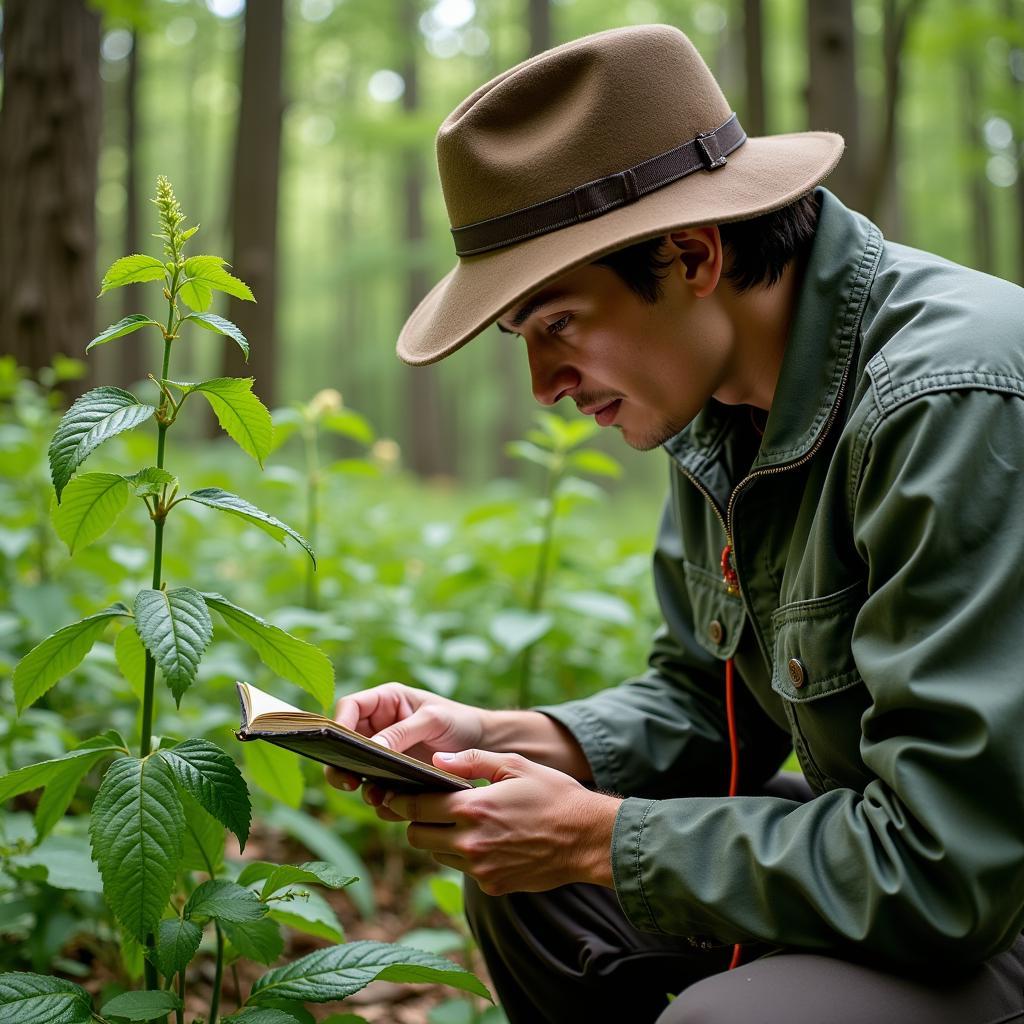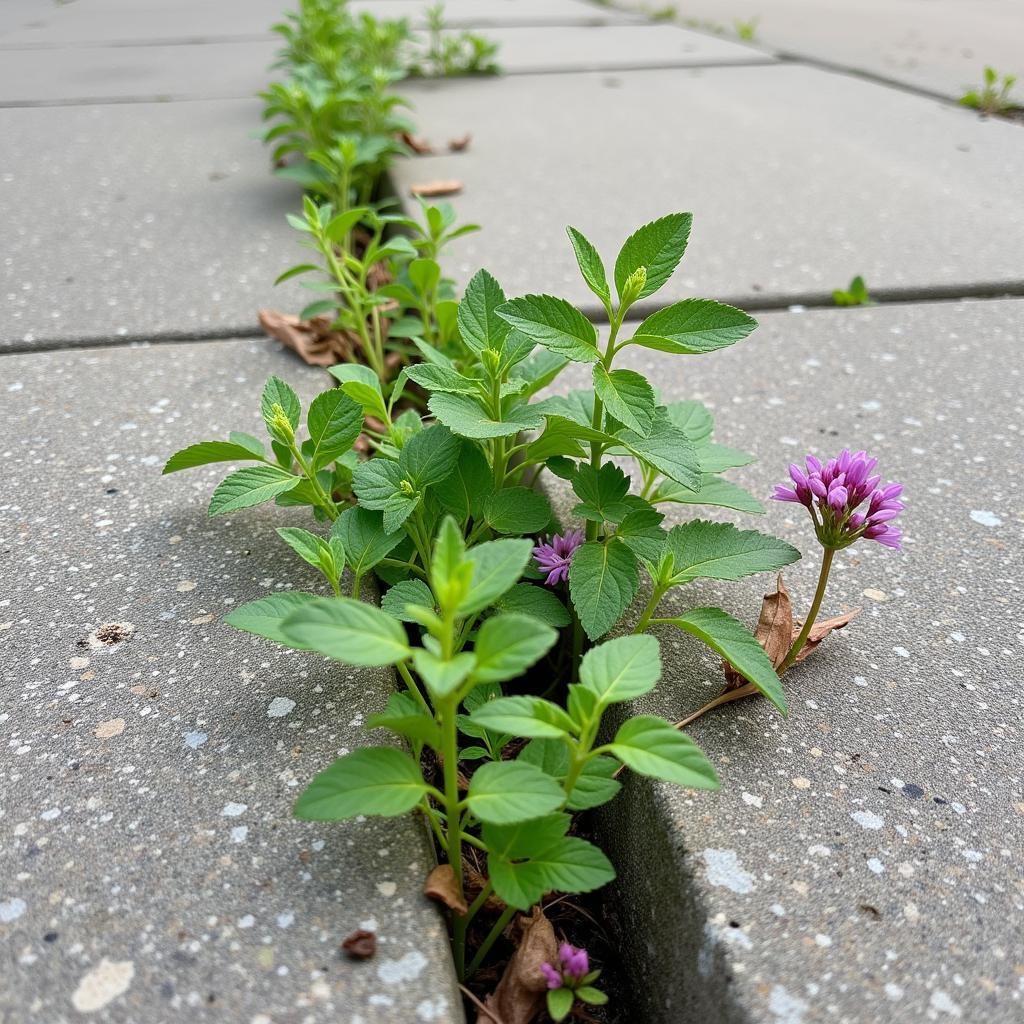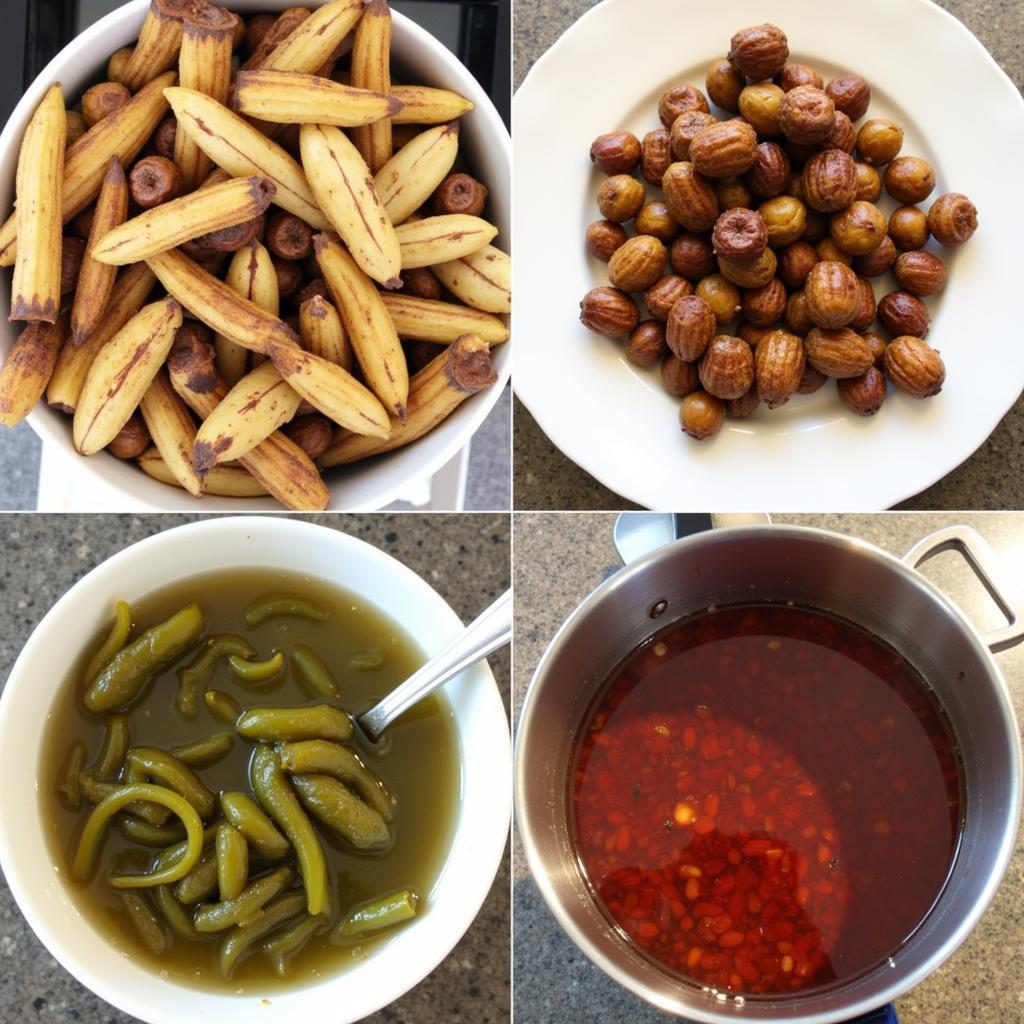Free Survival Food is more accessible than you think. Nature provides a bounty of edible plants, readily available for those who know where to look. Foraging can be a life-saving skill in a survival situation, and even in everyday life, it connects you to nature and provides a source of fresh, nutritious food.
Identifying Edible Plants: Safety First!
Before you start munching on wild berries, it’s crucial to know what you’re doing. Misidentification can have serious consequences, so proper plant identification is paramount. Invest in a reliable field guide specific to your region and familiarize yourself with the characteristics of edible plants and their toxic look-alikes. Remember, “when in doubt, throw it out!” is the golden rule of foraging. Learn about poisonous plants in your area and avoid anything that looks even remotely similar to them. Starting with easily identifiable plants like dandelions and clover is a good approach.
 Foraging for Edible Plants in the Wild
Foraging for Edible Plants in the Wild
Urban Foraging: Finding Food in Unexpected Places
Free survival food isn’t limited to wilderness areas. Urban foraging can be surprisingly fruitful. Many edible plants, like dandelion, purslane, and chickweed, thrive in urban environments, often considered weeds. Check local regulations before foraging in public spaces, and be mindful of potential contaminants from pollution. Remember, always wash your foraged finds thoroughly before consuming them. You might be surprised at the abundance available right in your neighborhood! This is especially valuable if you’re interested in military freeze dried food for emergency preparedness.
 Finding Edible Plants in Urban Environments
Finding Edible Plants in Urban Environments
Common Edible Plants: Your Free Survival Food Starter Pack
Several common plants are relatively easy to identify and offer excellent nutritional value. Dandelions are entirely edible, from the root to the flower. Purslane, often found in gardens, is rich in omega-3 fatty acids. Chickweed, another common “weed,” is a great source of vitamins and minerals. Learning to recognize and utilize these plants can provide a valuable source of free survival food. Explore local foraging groups or online resources for more in-depth information on edible plants in your area. You might even find information on how to best use freeze dried survival foods to supplement your foraging finds.
Preserving Your Foraged Finds
Once you’ve gathered your free survival food, you’ll want to preserve it to extend its shelf life. Drying, pickling, and fermenting are all effective preservation methods. Drying herbs and wild greens is a simple way to create a flavorful and nutritious stockpile. Pickling wild vegetables like mushrooms or ramps can add a unique twist to your meals. Fermenting foods like wild berries can create delicious and probiotic-rich preserves. Check out resources on best freeze dried survival food for more long-term storage options.
 Preserving Your Foraged Finds for Later Use
Preserving Your Foraged Finds for Later Use
Conclusion: Embrace the Abundance of Free Survival Food
Free survival food is all around us, waiting to be discovered. By learning to identify edible plants and practicing responsible foraging techniques, you can access a readily available food source in both wilderness and urban environments. This valuable skill can not only enhance your survival preparedness but also connect you to the natural world in a meaningful way. Embrace the abundance of free survival food and discover the hidden bounty nature provides. Consider supplementing your foraged finds with free food 123 survival food or survival food mre for a comprehensive preparedness plan.
Expert Insights:
- Dr. Emily Carter, Botanist: “Foraging is a powerful skill, connecting us to our ancestral past while providing access to nutritious, free food.”
- John Miller, Survival Expert: “Knowing how to identify edible plants can be the difference between thriving and merely surviving in a wilderness emergency.”
- Sarah Lee, Registered Dietitian: “Wild edibles often contain higher levels of certain nutrients compared to cultivated varieties, making them a valuable addition to any diet.”
FAQ:
- Is foraging safe? Yes, foraging is safe with proper plant identification and knowledge.
- Where can I learn more about edible plants? Field guides, online resources, and local foraging groups are great resources.
- Can I forage in urban areas? Yes, but be mindful of local regulations and potential contaminants.
- How should I preserve my foraged finds? Drying, pickling, and fermenting are effective methods.
- What are some common edible plants? Dandelions, purslane, and chickweed are good starting points.
- Is free survival food really free? While foraging is free in monetary terms, it requires time, effort, and knowledge.
- Should I combine foraging with other survival food strategies? Absolutely! Foraging is best combined with other methods like storing freeze dried survival foods.
Suggested Further Reading:
- Learn more about the benefits of freeze dried survival foods.
- Discover how to choose the best freeze dried survival food for your needs.
For further assistance, please contact us: Phone: 02437655121, Email: [email protected] Or visit our address: 3PGH+8R9, ĐT70A, thôn Trung, Bắc Từ Liêm, Hà Nội, Việt Nam. We have a 24/7 customer service team.